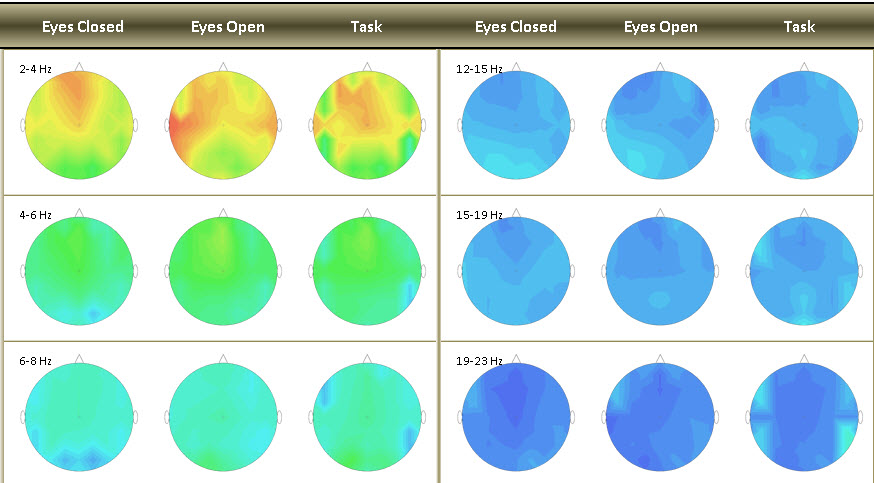Cingulate
Cingulate
Daniel Amen’s term “hot cingulate” relates to a cingulate where there is a lot of very fast activity (generally beta and/or high-beta which are significantly stronger at Fz than at F3 and F4 (or Cz than C3 and C4). Again, theta would not be included.
In the TQ, we use an approach developed by Tom Brownback, which looks at the subjective issues (are there obsessive, compulsive, addictive or phobic problems) which would suggest frontal midline disruptions. If those are present, we would look at the frontal midline (Fz) to see where those show up in the frequency relationship. If you are using the latest TQ, on the analyze page there is a graph of slow/middle/fast waves for F3, F4 and Fz and a comparison of percentage differences.

Cold Cingulate
The idea of looking at theta (or alpha) is that a person whose cingulate has been hot–working way too hard–for a long time can end up with ashes there instead of a fire. The cingulate, which controls the flow of emotional material to the decision-making pre-frontal cortex (among other things) is exhausted from working so hard for so long and produces excessive theta or alpha.